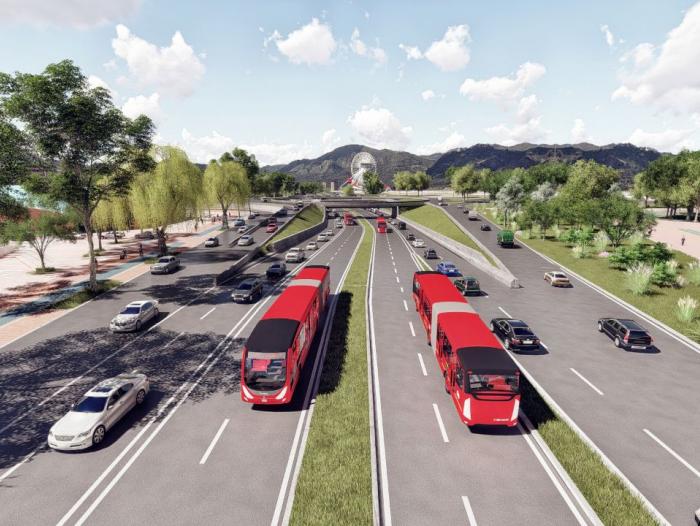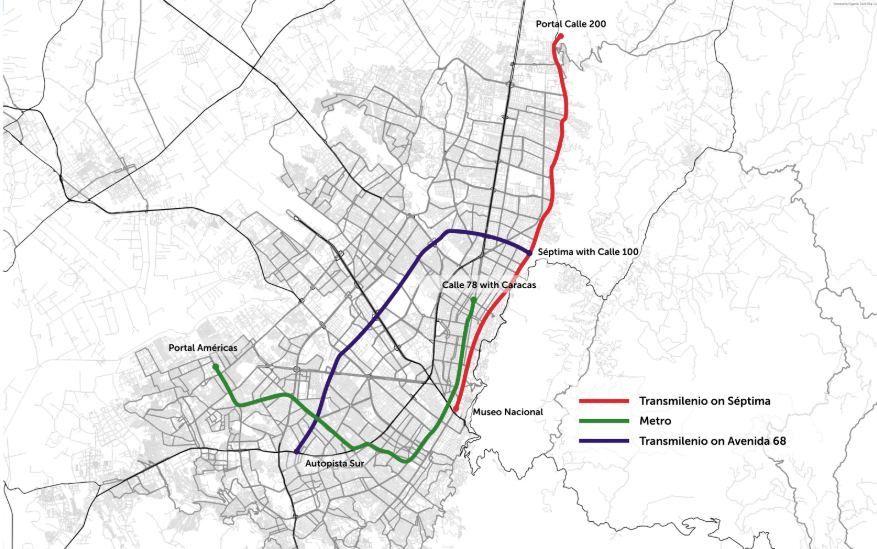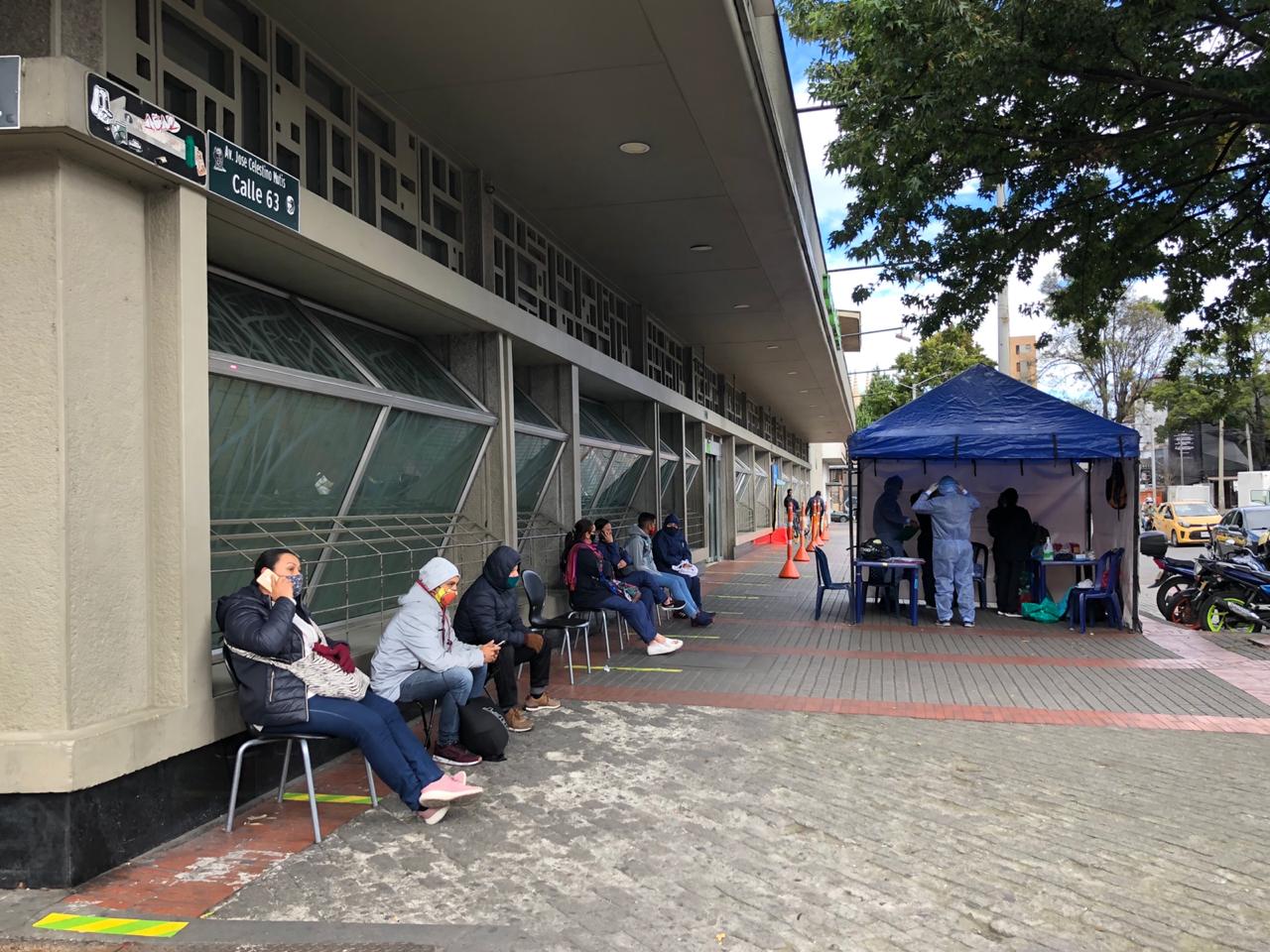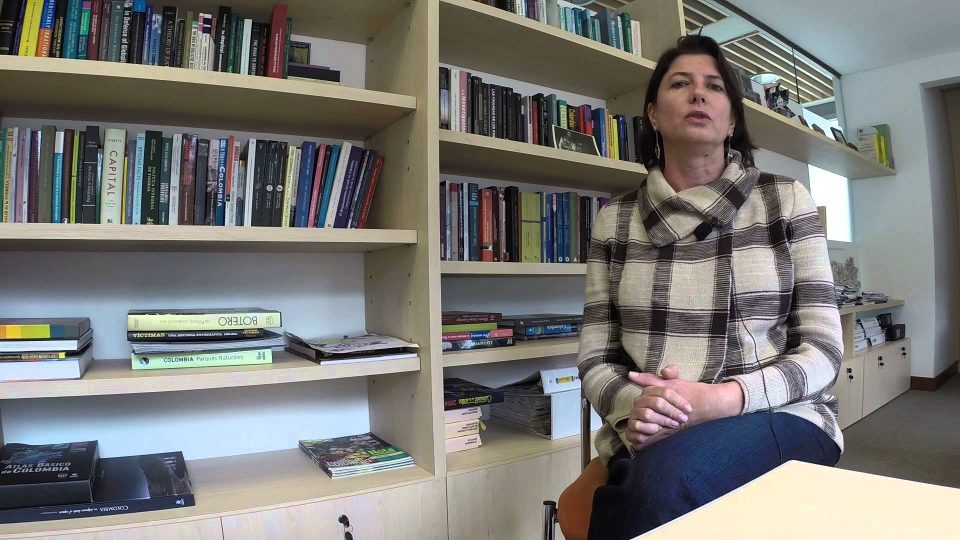The controversial TransMilenio on Séptima has failed to gain popular support, while the TransMilenio on Avenida 68 has the green light.

Bogotá residents associate Avenida Séptima with many images: constant gridlock, sites of protest, and the historic Parque Nacional. But a TransMilenio? The controversial plan remains in political contention, with local officials wary about public opposition, already-made land purchases, and continuing legal battles.
On the campaign trail, then-candidate Claudia López vowed against constructing a TransMilenio line on the Séptima. She responded to the plan’s vast unpopularity amongst residents, particularly upper-class bogotanos, who live along the historic avenue. But it turns out that residents aren’t the only ones who oppose the route. The majority of the city opposes the project as well. A recent survey by á Como Vamos found that 44% of respondents were against its construction, with only 30% in favour. Part of the hostility towards the plan stems from its intervention in Parque Nacional, a city landmark considered cultural patrimony of the nation.
The new TransMilenio line would run from Calle 32 to Calle 200, roughly Museo Nacional until Portal Calle 200. With 23 stations covering 19.1km, it would seek to alleviate Séptima’s high congestion and prepare for even higher transit demand in the coming decade. In addition, proponents say it would significantly reduce travel times along the corridor, benefitting many commuters who use Séptima to traverse the city every day.
Still, opposition has been fierce. Séptima residents have formed committees to oppose the project, and “No TransMilenio en la Séptima” stickers dot the apartment buildings and shops alongside the avenue. Many have expressed fear that the TransMilenio would threaten the safety of pedestrians and alter an emblematic central avenue of Bogotá. A tranvía alternative to the TransMilenio has circulated on social media, favoured for its aesthetic, reduced noise, and lesser impact on the street. But tranvía trams are significantly more expensive than TransMilenio buses, have a lower capacity, and move at a slower speed. While appealing, a tranvía system would likely fail to reduce Séptima’s intense rush hour traffic.
Related: Transmi on the Séptima: Not In My Back Yard!
The project’s unpopularity hasn’t stopped the national government from allocating funding for the construction. During her campaign, López advocated to divert this money and instead use it for the extension of the metro’s first line. In an interview with Semana, she stated, “With the COP$2.6 trillion that Peñalosa wants to waste in the TransMilenio for la Séptima, when I am mayor I will spend COP$2 trillion to complete the first subway line to Suba and Engativá, and COP$600,000 million towards Séptima because it needs intervention.” However, given the start of the bidding process for the project’s construction, the mayor has now acknowledged that she does not have the legal grounds yet to reverse the process.
TransMilenio on Avenida 68

“TransMilenio on 68 is a priority,” stated Claudia López in mid-January, responding to the results of a study from the national development financer, la Financiera de Desarrollo Nacional. While the TransMilenio on Séptima remains in question, plans for the system expansion on Avenida 68 are moving along a different trajectory. López essentially ensured the expansion of TransMilenio into the western side of the city, a route with the aim to create more connections between neighborhoods in Bogotá’s larger mobility plan.
Related: Construction to start on Bogotá’s metro
The new line will run 17km, from Autopista Sur as far as Séptima with Calle 100. With 21 stations, it will connect Suba, Autopista Norte, Ciudad de Cali, Jimenez, Calle 26, and Calle 80. And crucially, the line will facilitate transfers between these main avenues and the new first line of the metro.
The mayor’s support is partially based on high demand in the corridor that the TransMilenio on 68 would serve, in addition to its compatibility with the metro and RegioTram for western suburbs of Bogotá. But more importantly, the decision to construct a TransMilenio on 68 cannot legally be reversed. Though Claudia López asked that Peñalosa hold the bid at the end of his term, he rejected the request and opened the process. On January 23, the bid was awarded to nine different construction consortiums, with a single constructor, Mario Huertas Cotes, present in four.
The decision to continue with the TransMilenio on 68 has upset many of López’s core supporters, who called her out for contradicting her campaign promise to reject any expansion of TransMilenio during her administration. Members of López’s own party, Alianza Verde, and el Polo, participated in demonstrations to try to convince her to suspend the bid. Manuel Sarmiento, a Polo Democrático Councillor, told Semana, “The fact that we are in the ruling party does not mean we do not have differences in some things. We are not asking her to cancel [the bid], but rather suspend it to make some revisions, and she as the power to do this.”






